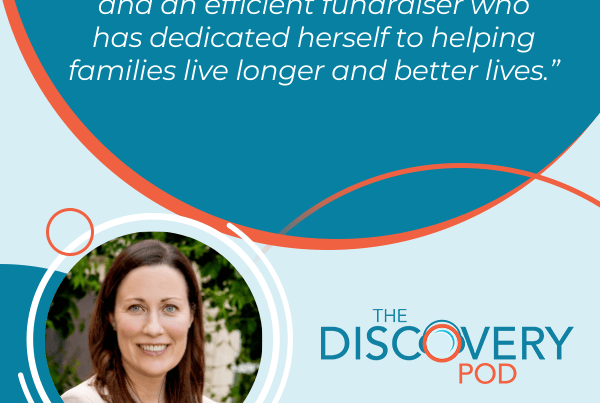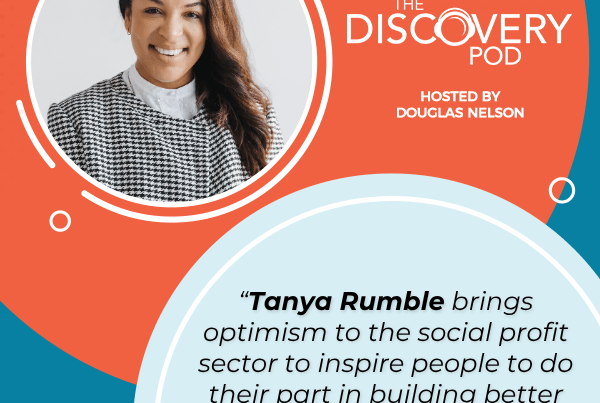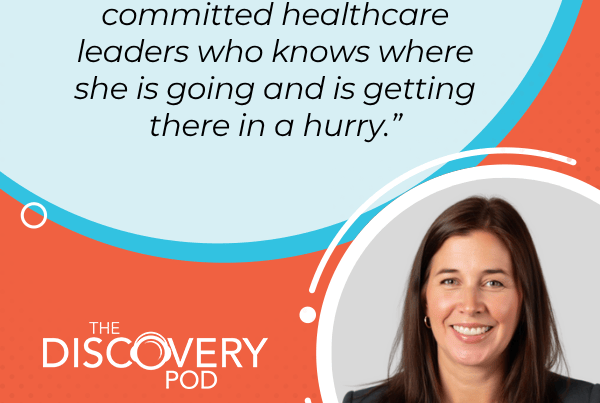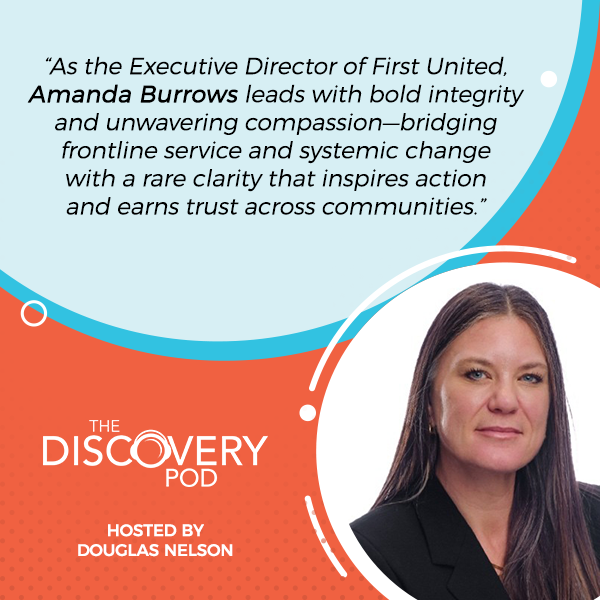
What does it take for a 140-year-old organization to stay relevant, radical, and rooted in justice?
Today, we sit down with Amanda Burrows, Executive Director of First United, a cornerstone of Vancouver’s Downtown Eastside. From providing essential services like food, water, and shelter to driving real policy change through data-backed advocacy, Amanda shares how First United continues to evolve—without ever compromising its values.
We explore the tension between frontline service and systemic reform, celebrate community resilience, and dig into how their legal advocacy led to groundbreaking housing legislation in BC. Plus, Amanda unpacks how deep-rooted integrity builds bridges with donors and fuels their powerful partnerships in the fight against poverty.
Tune in to hear how one organization blends compassion, courage, and conviction to make meaningful impact—generation after generation.
—
Listen to the podcast here
First United With Amanda Burrows, Executive Director
Welcome to The Discovery Pod, conversations with social profit leaders. Our guest on the show is Amanda Burrows. Amanda is the Executive Director of First United in Vancouver, British Columbia. She has an exciting, interesting, and educational story to tell. Amanda and her team are leading a transformative $92 million redevelopment to create 103 units of deeply affordable Indigenous housing in the Downtown Eastside. The project embodies First United’s commitment to reconciliation, historical accountability, and community-driven solutions while respecting the cultural significance of the unceded territories on which they have built.
Amanda talks about her transition from being the Director of Development to Executive Director of the organization, what it means to be a fundraiser moving into an Executive Director role, and the deeply important role that her organization is playing in advocacy and the provision of frontline services. For anyone who is new to the role as a leader of an organization or is looking to transition into that senior role in their own organization, this is an episode you don’t want to miss. Thank you, Amanda, for making time for this. Thank you for sharing your wisdom. To everyone who is tuning in, enjoy Amanda Burrows.
—
Welcome to the Discovery Pod, Amanda.
Thanks for having me.
It is going to be a great conversation. We’ve got a lot to get through. I’ve got a lot of questions in front of me. Here is the first one, most important, right out of the gate. Tell us about First United and the work that you and your colleagues do.
First United’s 140-Year Evolution & Core Principles
Happy birthday to us. We’re celebrating our 140th birthday in 2025. We’ve been around in the Downtown East Side for over a century doing frontline work. We are led by this vision where we can be a neighborhood where everybody’s worth is celebrated and all people thrive. In order to get there, we adhere to these principles around dignity, belonging, and justice. When we say dignity, what we mean is meeting people’s basic needs with their human rights, like food, water, and shelter. When we say belonging, we’re talking about places without stigma, safer places, places where you feel welcome, and places where you can worship how you want.
When we say justice, we’re talking about restoring our relationships with each other and the systems, even if that means breaking those systems that we think keep creating oppression and poverty. We’ve been around for a long time. We will remain in this community for a lot longer as well. I am excited to be celebrating this milestone with so many people in our community.
Happy birthday. You’re very good for your age. For people hearing that the organization has been active for that period of time in Vancouver’s Downtown East Side, certainly, there’s a lot of history in Vancouver. There’s always been at Downtown East Side. Quickly, this isn’t a history lesson, but how has the organization evolved over that 140 years?
We’re so happy to be celebrating 140 years, but there was a community that was here a lot longer than us. We are on the unceded territories of the Musqueam, Squamish, and Tsleil-Waututh. This land that is called Vancouver, and this community called the Downtown East Side, used to be called K’emk’emeláy, which means in Squamish, the land of great maples. We no longer see those maples now, but this is the history, and then we springboard from there.
What’s been so great about the history of Vancouver and First United is this alignment of the responsive nature that we are. As early as the twentieth century, when the big pandemic was here, that’s when First United started to do a lot of frontline work and support in that area. In the 1930s, with the Great Depression, that’s when we started our formal food program because a lot of men had moved to Vancouver, assuming there were some jobs, and there weren’t. That’s how we started our food program, feeding 1,200 men per day.
When there were some encampments where the Georgia viaducts are now, First United has a history of doing responsive work in tent cities, as we continue to do now. Fast forward to the ’80s when sex workers were pushed out of Mount Pleasant, First United, and our church brought these women into sanctuary and shelter. During the HIV and AIDS crisis, without stigma and judgment, First United and our ministers were on the front lines, welcoming people in and trying to understand and help folks in this very scary time. It then led to one of the first safe injection sites, which was started in our church, to destigmatize and show how harm reduction can be a life-saving intervention. It later turned into Insite. It is still operating.
We were on the front lines of the homelessness crisis. We turned our church into a shelter. We dealt with COVID-19, and we continue into our future. First United’s history is tied to the history of the City of Vancouver. We’ve been working and operating in the city, continuing to respond, but we don’t only want to be responsive. We’re at a moment in history in our time where we can do both, respond and start asking these larger questions about why are people poor, why is homelessness increasing, why are people dying at alarming rates of overdoses, and start doing some more system change and evidence-based and policy recommendations going forward into the future, which we’re currently working on now.
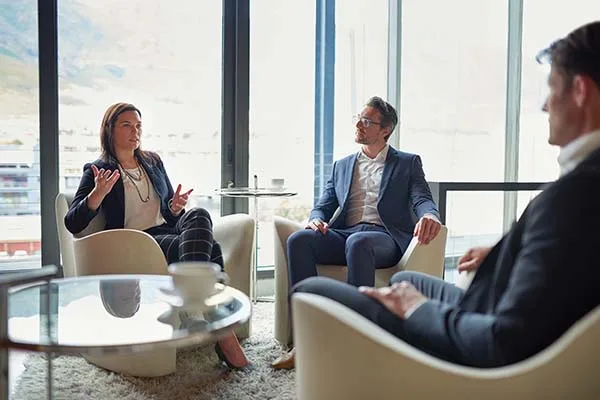
First United: We don’t just want to be responsive. We’re at a moment in history where we can do both: respond and start asking questions like why people are poor, why homelessness is increasing or why people are dying at alarming rates from overdoses—and begin working toward systemic change.
Balancing Frontline Services With Systemic Advocacy
It’s a remarkable breadth of history, but just a remarkable breadth of the activities you’re undertaking. One of the things I am always so curious about in organizations that have such a clear, direct frontline services orientation, as you certainly do, is advocacy and system change, which is important. I’m always curious how different leaders, in their minds or their strategies, balance that role of providing those essential frontline services and advocacy. They’re such different muscles and a different tone of voice for an organization. How do you, as Executive Director at First United, find that balance for yourself?
We came to a moment of time in our history, and had built up enough internal capacity to be doing both. In the ecosystem of the non-profit sector, a lot of service providers take on different roles of the frontline work, of the life-saving work. Some focus more on system change, policy, or legislation recommendations. We are in a place to do both right now because we have the internal capacity, which includes funding resources to do this work.
This is what’s so important about what we’re doing. I’ll use our legal advocacy as a good example. For decades, since 1970, we have had a legal advocacy department. Most case files and clients that we deal with are those facing evictions, low-income folks not knowing what to do to navigate the system. We have a free legal clinic. We do thousands of these per year. We’ve been doing them for decades. At a certain point, you start having to ask why.
Why are there so many evictions happening in the City of Vancouver? We began to do data collection, and we launched the very first eviction mapping project in BC, which outlined across BC because it’s not just about the Downtown Eastside. This is a result of a lot of failed systems that people come into this neighbourhood, and the culmination of how people are living in poverty. We wanted to zoom that out. Based on our data collection, our surveys, and quantitative and qualitative research, we determined that evictions are happening at alarming rates. One of the main reasons they’re happening is because of landlord-use evictions.
We put together some law reform based on our evidence, presented it, and lobbied it to the provincial government. They passed Bill 14, which makes it harder for landlords to evict people. We know that one of the number one reasons is that people are evicted or through landlords. A huge outcome from our data revealed that people become homeless. People become homeless when they’re evicted, and it is very hard to get back into the renter’s market in this unaffordable city and increasingly unaffordable province. That’s one specific example of doing both.
We have the trust and the credibility to do the frontline work. We have the opportunity and capacity to create these opportunities to collect data in ethical ways with consent. We then form these legal arguments that go forward as policy recommendations that can end up turning into, as it did in our case, legislation that is then meant to help people living in poverty. That is a great example. We’re doing many more examples like that in other areas of our work that are from the frontlines that can go into this larger system change.
From an organizational standpoint, the connection is very logical and obvious, leveraging that credibility that you have at the outset from your frontline services to be positioned to understand the situation, the root causes, and advocate for changes that are going to address those root causes. As you moved more prominently into that advocacy space, were there conversations you needed to have with historical funders or donors about speaking with a different tone of voice or speaking to a different audience?
It’s the integrity that we hold in all spaces. You tailor your messaging, but you don’t have to tailor your values. Although some of the conversations or the tone might shift, certainly the message, our values, and the principles that we operate by don’t. When you’re coming at a place in that foundation of integrity like that, I have only ever felt from our funders, our donors, our constituency groups, and our communities of faith, a ton of support and encouragement as we are trying to hold our elected officials to account for the policy directives that they can do to either help people living in poverty, or so often that we see punish people living in poverty. We are given so much encouragement.
You tailor your messaging, but you don't have to tailor your values. Share on XWhere maybe there could be fear for other folks leaning into this lobbying or public advocacy space, I encourage your audience out there. If they in their organizations have the capacity, willingness, openness, or desire to do more of this advocacy work, do it. If the true followers and constituency groups that have lifted you to do this work so far are truly your partners in this work, which I hope donors and funders are our partners, then this isn’t a transaction. This is relationship building.
They truly are our partners, and we’re respecting them that way. I have found time and time again that we are respected, encouraged, and lifted up. From a space of abundance, we’re getting even more funding for this work. We don’t lose sight of the frontline work that we continue to do because it carries that trust and credibility, and we’re rooted in the issues. I would recommend it to other folks, not to worry about the messaging.
I appreciate that. Thank you for sharing that. I think that’s good advice to organizations that are considering that. What I’ve seen in some of the work that we’ve done here at the Discovery Group is organizations very timidly moving into that space, and that’s not working particularly well. It’s not that the values are different. It’s just such a different motion. It may not be resourced sufficiently, or they may not have done the homework that you described, of doing the eviction mapping and having the data behind the advocacy.
Advocacy is very different than raising awareness. Organizations that appreciate that distinction tend to do a lot better. Thank you for underlining that. One of the other issues and values that I think First United represents incredibly well is your work with First Nations communities, in particular, as it relates to reconciliation, the focus of your First Forward campaign. Can you talk a little bit about the role of reconciliation in the work at First United?
Reconciliation In Action: Indigenous-Led Housing & Heritage
We are on the unceded territories of the Musqueam, Squamish, and Tsleil-Waututh. At First United, we say, “Reconciliation in Action.” It often begins with us. We knew we needed to redevelop our site. We tore down our church. We’re building eleven stories, seven floors of Indigenous social and supportive housing, and then four floors of First United services. When people ask, “Why is your housing for Indigenous only?” We’re responsive, and we go to the greatest need. When the Downtown Eastside’s demographic is 40% urban Indigenous living here, when only 2% of Metro Vancouver is Indigenous, that data point is what we call the racialization of poverty.
When we see in the Downtown Eastside the urban Indigenous population at 40%, we wanted to respond to that greatest need. That is why we’re building Indigenous social housing. We’re also not going to operate it. We are not an Indigenous organization. We have partnered with Lu’ma Native Housing, an Indigenous-founded and Indigenous-led organization, to operate the housing portion. First United maintains ownership of the building. We are leasing it out. They’re doing the operating agreement, and First United is then managing and operating our four floors of services. There’s more to the story of Reconciliation in Action.
In this whole redevelopment process, you have to put in with the City of Vancouver, like this heritage application. You’re going to tear down a building. Can you or are you allowed to? We subverted that process by taking from the lens of an Indigenous-led heritage application. Rather than the built environment being the heritage, the land is the heritage. It starts with K’emk’emeláy, the land of great maples, which began way before First United was on that site. Further to that, the whole design of this building has been thoughtfully partnered with Indigenous consultants to design something that is going to speak to the host nations of the Musqueam, Squamish, and Tsleil-Waututh.
The exterior of the building will be installing public art that represents the three host nations, three house posts, and welcoming figures to come into our site. There’s going to be a Coast Salish copper siding in homage to that. The interior of the building will have a lot of art from urban Indigenous folks. Another thing that we’re quite proud of when it comes to these Reconciliation in Action efforts is that in our capital campaign, First Forward, you have to raise $37 million.
One of the ways that fundraisers often come at this approach and try to get more funding is to have naming rights. We don’t have any naming opportunities for donors. Some of my colleagues in the field said, “I think you might be leaving money on the table.” I was like, “This is what me and leadership decided that we were going to do going forward.” Every room in the building will be named after an Indigenous name, a person, or a leader in the community. It will be dedicated by a donor.
We still want to honor how people might be compelled by that type of recognition. When you’re moving forward with things and integrity and taking a principled stand, we have not left money on the table. Our donors have been fabulous in dedicating spaces, recognizing, and realizing that they will not be named spaces, but they are dedicated.
All of this to say, at the end of the day, First United is part of The United Church of Canada. It is a huge strategic and important vision of the full church and our organization to have reconciliation as a priority. The United Church used to operate residential schools. We have apologized for that behavior. That is a great first step, not the only step. We believe these next steps that we’ve been making in reconciliation are truly authentic. This project does have healing and reconciliation at the center of it. That’s what we continue to focus on. I can’t wait for it to be finished and open.
That is incredibly powerful and motivating. One of the challenges that we see in a number of organizations, particularly those working in social services, is the role of reconciliation or reconciliation in action. Sometimes, the management team sees it as part of the core purpose or integrated into the core purpose. The board or some funders may see it as adjacent to the core purpose and needing to be integrated around the edges. It sounds like in your description that your entire organization has taken reconciliation as the core purpose or as a prime driver of that core purpose. Was that a moment in time, or was that something that you arrived at over time as an organization?
It is over time. The United Church of Canada has a huge priority. First United is a distinct, separate organization. Governance is part of the United Church of Canada. This has been on our mind for a long time. The work that we’re doing is quite thoughtful, but it continues. This can’t just be a one-off project with it, even though it’s been so thoughtful. We have to carry this forward into the future. What are our programs? How are we going to operate? How is this going to be a culturally safer space for different communities to come into, and for the urban Indigenous communities to come into? Are they going to feel welcome here? This is part of their own.
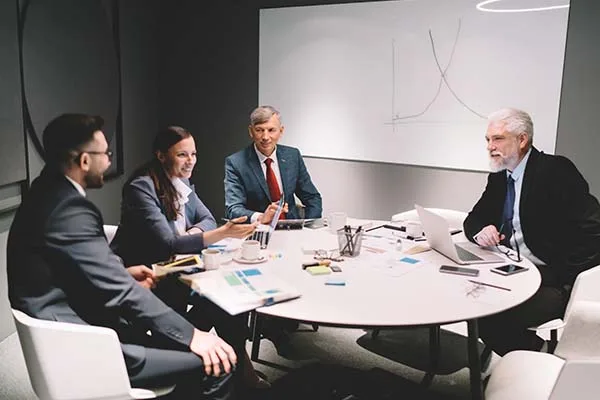
First United: This can’t be just a one-off project. We need to carry this into the future by defining our programs and how we will operate.
Something that we’re building into the new building is the sacred space. It is actually for multi-faith. It will have the medicine wheel and a river on the floor. We aren’t leaning into Christian iconography. We know that can be triggering for some folks. We are a faith-based organization that is part of the United Church, and we’re still being quite inclusive and sensitive to all religions to come in, feel welcome, and to be able to worship the way that people want to.
Thank you for explaining that and talking that through. There is thoughtfulness, both in this project that we were talking about in the First Forward, and the housing development. That is incredibly thoughtful. It’s nice to hear that it’s connected to the overall organization. Let’s go back to the naming. One of the questions we always ask when we’re doing a feasibility study or market surveys, testing a campaign, is, “How important do you think naming will be in this campaign?” I would say 95% to 98% of people say, “It seems to be important to other people, but it’s not important to me.” Occasionally, there’ll be one or two families that’ll say, “That’s something that we look at.”
Having grown up as a fundraiser, I know there are donors for whom that is important, but you remember them because they’re so rare. They are the ones who are shopping for how big they can get their name or how many lights they can put around their name when they make their gift. You took this very thoughtfully and were connected to the purpose of the project, saying, “We’re not going to put donor names on it.” You said some members in the profession said you’re leaving money on the table. How hard was it to make that decision from the outset, and what was it like the first few times you introduced it to donors?
It wasn’t hard to make that decision at all. It was quite relieving. It felt less performative. It felt more authentic. It feels more like you’re in a partnership with people, that it’s less transactional, that it’s, maybe even that word, altruistic. The thing that I always want to honor, because I have been a fundraiser for many years, is that I have had wonderful relationships with philanthropists and donors throughout my career in New York, Toronto, and here.
I would never want to make anyone feel bad, embarrassed, or guilty that they have had their name on something. That is not the approach we’d ever want to take. If a family says that’s what they’ve done, it’s just been a traditional thing. That’s just how we’ve always done it. It’s just about a reshift and a reframing. We are still dedicating spaces. We are still honouring these families. This was a different approach we’re taking. Some families have dedicated spaces in such a meaningful way, and in a way that’s heartbreaking, because they have lost somebody to an overdose. I had no idea.
What we will do when we reopen is we will have a reception for those donors, whether it’s private, just with them, just to be in the space alone, or if they want more people there. By far, I have felt way more traction and an authentic thank you with that, to be able to be in a space, to see it, and to be involved with it in that way than lights around a name. Even if you haven’t wanted it as a philanthropist, you’ve been given it, I don’t want to criticize a previous event or somebody’s legacy that way. I just think we’re trying a new way forward, and people embraced it.
That’s good to hear. The continuity of that decision with the overall focus of the project is so clear. I would imagine it’d be hard for a donor to go, “No, but I still want,” and I hear the distinction between naming and dedication. I appreciate the difference there. I’m sure that your donors do as well. How is the campaign going?
It’s going well, thanks for asking. This project is $92 million. The four floors of First United, the capital campaign, are $37 million. We have $3.5 million left to go. We have a couple more years to do it. We are tracking ahead of schedule. As a fundraiser, the last few million are often the hardest, but we are super confident and humbled by our communities coming together and being so generous. The generosity I’m seeing is touching and overwhelming. I just love how many donors we have. There are donors from $5 to $10 million. It’s so exciting to see such breadth and so many people getting involved and being able to feel like they can be involved in such a legacy project. That is such a community amenity and really will help transform the tech corridor in Hastings in the Downtown Eastside.
The Fundraiser To Executive Director Transition
I’m glad to hear that it’s going well. I am not surprised based on how our conversations have gone so far. You have a unique perspective on this campaign because you came to First United first as the Director of Development. Presumably, you were so charming and so effective as a fundraiser. “You should be in charge.” You moved from Director of Development to the Executive Director. How did you find that transition as a career fundraiser moving into an Executive Director role?
I am so grateful. I have had decades of grounding in the fundraising space because, as a fundraiser, we are all about relationship building. We understand the finances. We understand storytelling. We understand the vision because we are trying to bring our public along with that vision. To have that foundation and move into the Executive Director role was such a gift I’m so grateful for.
Fundraising is all about relationship building. We understand the finances, the storytelling, and the vision because we are trying to bring our public along with that vision. Share on XAlso, prior to this role at First United as a fundraiser, I was a fundraising director and trainer. The total nonprofits that I was helping build their capacity in the fundraising space was about 25 nonprofits, ranging from a breadth of issues, from health, arts, education, environment, and so forth. Whenever I would go into these organizations, I was sent by a funder. They paid for my role, where these groups couldn’t necessarily afford a Director of Development, and I’d help them consult.
What I found with these groups, and mainly because they were smaller organizations, is that the Executive Directors were the ones who had such a huge responsibility to fundraise. They turn into a lot of not just fundraising coaching, but a lot of coaching conversations with these folks. How do you work with your board? How do you storytell? What is your theory of change? Are you okay? Do you have a good balance? It is serious and real humanity coming together about the reality of what it’s like to be an Executive Director, and for me to be an ear.
Taking that experience and that breadth of different nonprofits I worked with, to then coming back to being a fundraising director in just one organization, First United, and then suddenly getting promoted, I came to the role with a real appreciation of what Executive Directors have to go through and what they have to carry internally, with all the capacity from the finances to the HR, the fundraising, the marketing, the IT, and the actual program delivery. The transition was great. I don’t know if it was charm, but I am still a fundraiser at heart.
Some of the biggest ways that I stay connected to the vision and the mission are when I’m making solicitations with a potential donor, because you’re sitting there and telling your story. You get to just be discussing the work and the impact that you’re trying to have. You’re making an invitation for someone to come alongside us in this work to make that impact. When I’m fundraising, I feel so connected. As an ED, I get to feel so connected with the programs and the mission because I do some of the frontline work and advocacy, too. I am constantly humbled and honored to hold this space in this moment in time in history at First United. It’s been an incredible opportunity for me, and I’m so grateful.
This is one of the things that I often say to executive directors or CEOs who maybe haven’t, like you and I, grown up as fundraisers, had that opportunity to be on the frontline asking people for money for a living for a number of years. It is one of the magic wands of organizational leadership. There are very few, but one of them, I believe, is being able to talk to your board, the members of your organization, and those in your essential partners about what you’re hearing from donors.
It’s the phrase, “When I talk to our donors, these are the questions they’re asking. These are the issues they’re raising. This is how they see our role in the community.” It’s something that, as the leader of the organization, you can do that no one else can do. The board chair can’t do that. The director of development brings a different spin to the conversation. As the organizational leader, you get to have those conversations with donors. Often, when executive directors are feeling like maybe they’re off-center somehow, or they’re in over their head a little bit, my advice is always to go talk to donors. Go connect to that conversation about why people support your organization.
You will find it in yourself. If you’ve let go of the rope a little bit, you can grab a little tighter. More than anything, it gives you a frame of reference for how the community you serve or those that are funding your work to serve that community view you in a way that is incredibly powerful. First of all, being a fundraiser should mean you become the executive director. That’s my starting point. For people in those leadership roles, do whatever you can to stay connected to those donor relationships.
Amanda, you’re a perfect example of that. I just wanted to underline that for our audience. You mentioned in solicitations. Solicitations are like the high drama, get up and take a deep breath in the mirror every morning kind of meetings. You are in a campaign. I appreciate you probably doing that fairly often. Other than those solicitations and your campaign, how do you stay connected to your donors?
Staying Connected With Donors Beyond The Ask
We try to stay as connected as possible and not just ask. The donor cycle and the solicitation piece are probably 5% of not just my work at large, but the fundraising work. We are very thoughtful in our cultivation period. Something that happened during COVID, when we couldn’t gather, we wanted to still convene in meaningful ways. We started this thing that we lovingly titled Toast Talks. We do them three times a year.
There are usually almost 100 people in our community who come, including donors. We join online, and it’s an opportunity to check in to give some updates about our work. We always have some program highlights, policy highlights, or what’s happening. What are the existential threats in the Downtown Eastside to dig into and dialogue about? We’ve been doing that for years now. They’re successful.
That is a wonderful way for us to stay connected. If people don’t attend that, it’s a great way to follow up that you didn’t attend and have actual one-on-one conversations. Because we’ve shifted so much in COVID to the online environment, it can be easier to stay connected. I remember that before, it was unheard of to meet with a major donor online or on the phone. You go in person. Somehow, during COVID, that “only one size fits all” was out the window. Moving forward, it’s not a sign of disrespect to convene online.

First United: Make sure you’re maximizing the cultivation stage, which is about engaging, educating, and inspiring. If you start by sharing why you give and why you care, the person in front of you will carry the rest of the conversation—and you’ll gather beautiful insights and data points.
I love being in person. I love when they come on-site. I love doing a walking tour to stay connected. I do those often. I’ve been doing site visits that aren’t asks. There are many touchpoints, but I love that there is some more variety now. What I always encourage people on our team, other colleagues, peers, and people I mentor is that when you’re not in a solicitation and not going to make that invitation to make a gift and partner in a project, make sure you’re maximizing the cultivation stage. I always say it is to engage, educate, and inspire. That’s not just you being a talking head and offering information. That’s the point where you stay connected to donors, and you ask why.
People are like, “Where do you even start?” Don’t worry, it’s not going to be dead air or awkward. If you just start with why you give, why you care, that person in front of you is going to carry the rest of the conversation. You’re going to get such beautiful information and data points. You’re going to know somebody better, and it’s just going to make it that much easier when it comes to the invitation. We stay connected. We operationalize it quite a lot because we’ve got a ton of donors.
We have these Toast Talks and the follow-ups if people aren’t there. We’ve got the annual reports that we use as an opportunity to connect with people. Did you read it? Do you have any questions? We do the one-on-one coffees. We do the one-on-one Zooms. We do group tours. We have these sequences and touchpoints that we do because we want to make sure it’s meaningful, and we’re not just asking for people’s time or their finances always.
In the course of our conversation, you’ve talked about the incredibly important and thoughtful purpose of your organization, the history of your organization, and it comes back to how we engage them in fundraising and do that in an authentic and genuine way. For board chairs tuning in, that is why you hire fundraisers to be your executive director right there. Amanda, I so appreciate what you’ve shared in our conversation. I am so appreciative of the work that you and your colleagues do. Before I let you go, I’m going to ask the final question. Amanda, what are you looking forward to?
I’m looking forward to the First Four. That’s the name of our capital campaign. I’m looking forward to it being complete. I’m looking forward to this project opening its doors and welcoming the community back in. We’ve been operating our programs and services on 6 or 7 sites in the middle of construction. This is serious talk, and what’s happening in the Downtown East Side right now is important to highlight. We say this community is one of struggle, but one of strength.
You don't need to treat housing as a commodity; it can be about a social return on investment. Share on XWhenever we talk about the struggles, I highlight the strengths first. It is a place of deep resilience. It’s a place of welcoming, where people know your name. It’s a place where there are artistic and cultural contributions. Alongside this, we know that there are struggles. There’s criminalization of poverty and racialization of poverty, where we say grief is a constant companion because people die every day of an overdose. There is a homelessness crisis. We have existential threats when it comes to policy directives, certainly from the City of Vancouver’s elected officials, saying that they’re going to pause supportive housing, adding more police into this community, and creating more harm.
We have a lot of work to do. When the city wants to rezone the Downtown East Side to open it up to more market housing, we know that that is just a way to say gentrification. We know that gentrification displaces. As long as First United exists in this neighborhood, we are going to do everything in our power to ensure that type of erasure does not happen. What I’m looking forward to is First Forward, this redevelopment project being open and proving to the City of Vancouver that projects like ours are viable. You don’t need to treat housing as a commodity. It can be about a social return on investment. Projects like ours that came together with multiple funders and private donations, and philanthropy can keep the housing rents deeply affordable.
This is economically viable without having to be with financial gain. I’m looking forward to proving that this project worked, as we know it will, and that the city can encourage other developers to replicate a project such as ours that has done with thought, with reconciliation at the center, to help uplift a community and to enable our vision of to be a community where everybody’s work is celebrated and all people thrive.
Strength to you, my friend. What a great thing to be looking forward to. Amanda, thank you so much for being on the Discovery Pod.
Thank you so much for having me. I appreciated it.

